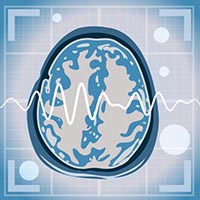Developing Electrophysiology Training Resources

This event was supported by the APS Fund for Teaching and Public Understanding of Psychological Science, which invites applications for nonrenewable grants of up to $5,000 to launch new, educational projects in psychological science. Proposals are due October 1 and March 1.
Cindy M. Bukach of the University of Richmond noticed a problem: The field of cognitive neuroscience relies on costly and complicated neuroimaging methodologies, creating a barrier to entry for undergraduates. An exception is the electroencephalography/event-related potential (EEG/ERP) technique, which offers inexpensive and accessible methodologies for investigating cortical dynamics during human cognition. There are relatively few EEG/ERP research labs at primarily undergraduate institutions (PUIs) due to demanding faculty teaching and service commitments and lack of training resources and technical support.
With support from the APS Fund for Teaching and Public Understanding of Psychological Science, Bukach set out to develop and test a sample ERP course module complete with pedagogical slides, instructional videos, and sample data, with the larger goal of developing a full, hands-on ERP curriculum that would be especially beneficial to students at PUIs.
In June 2014 Bukach and her colleagues Paul Kieffaber (University of William & Mary), Jane Couperus (Hampshire College), and APS Fellow Catherine L. Reed (Claremont McKenna College) met at the University of California, Davis, with consultants and expert ERP researchers Steve Luck, an APS Fellow, and Emily Kappenman, to create an actionable agenda. This working group conducted an online survey on EEG/ERP listserves to determine what materials faculty would want for such courses. Twenty-two percent of the 206 respondents were on the faculty at PUIs. Remarkably, of those respondents only 65% reported that they currently include EEG/ERP methodologies in at least one lecture for a course. Only 32% reported offering a lab course with an EEG/ERP project. Moreover, the need for EEG/ERP teaching materials was not limited to PUIs. Of the total respondents, 86% indicated a “moderate” or “great” need for EEG/ERP teaching materials. From these responses, it was evident that course materials generated by the proposed project would benefit faculty at both undergraduate and research institutions.
In January 2015 the group submitted a grant application to the National Science Foundation Improving Undergraduate STEM Education (IUSE) program entitled “Collaborative Research: Preparing Undergraduates for Research in STEM-related fields Using Electrophysiology (PURSUE).” It proposed a core set of teaching modules and data collection guidelines for the ERP virtual lab, including an introductory lecture that included a learning context (attention to fearful faces) and original animations. Most students rated the animations helpful for understanding these concepts, and the group is currently revising these materials for further testing.
Final versions of the course materials will be shared with APS for distribution and posted online for free download.





Comments
This sounds like an incredibly useful resource. A lot of studies at our department use EEG and we’re getting ERP equipment soon as well. Is there some way of getting notified when these resources become available? Would like to share it with the relevant staff members to incorporate into some of our curricula.
To find out more about when these resources will be available, contact the Principal Investigator, Cindy Bukach, at [email protected]
Alex Kincannon
APS Teaching Fellow
I very much appreciate the need for such information resources. Too often I witness researchers using EEG without proper training, they have to learn almost everything by trial and error approach. Therefore I’d like to join to Gerards request for notifying when the resources become available.
APS regularly opens certain online articles for discussion on our website. Effective February 2021, you must be a logged-in APS member to post comments. By posting a comment, you agree to our Community Guidelines and the display of your profile information, including your name and affiliation. Any opinions, findings, conclusions, or recommendations present in article comments are those of the writers and do not necessarily reflect the views of APS or the article’s author. For more information, please see our Community Guidelines.
Please login with your APS account to comment.